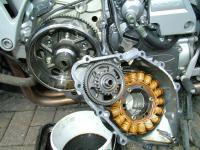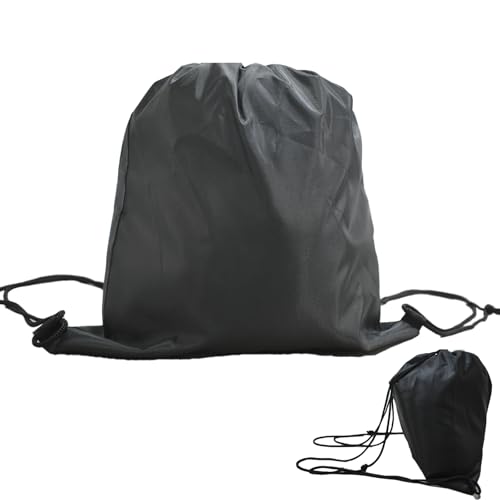...So, WHAT force is going to "slow down" that turning crankshaft when I turn on a light or plug an accessory in? To make the engine work harder and burn more fuel there had to be something physically trying to work against it.
That's the crux of my question here which still seems unanswered.
Sorry if I missed it.
The force is magnetic.
This pic shows the coils and the ring magnet that moves round the outer diameter of the coil assembly.
(Click on image for larger view.)
Here's a thought experiment.
As you say, the magnet (actually a ring arranged N-S-N-S ...) is rotating round the group of coils. Initially we'll say the coils are open circuit, so no current can flow.
As a magnet passes a coil, the magnetic field of the magnet passes through the coiled wire and induces a voltage in the wire, basic magnetic induction. But there is no current because the coil is open circuit.
Now put a light bulb on the coil. As the magnetic field from the magnet induces a voltage in the coil, current will flow through the coil and through the lamp. Now, here's the interesting bit - that current flowing through the coil creates its own magnetic field.
As (say) the north pole of the magnet
approaches the coil, the induced current creates a north pole at the end of the coil,
opposing the approaching magnet. As the pole
moves away from the coil, the induced current is in the opposite direction, creating a south pole that is
tugging the magnet back.
The higher the current, the greater the magnetic field, the greater the force opposing the magnet's movement.
Does that help?
































































